#eLearning development services
Explore tagged Tumblr posts
Text
How Can Custom eLearning Development services Help Your Business?
Explore top eLearning development services to create engaging and effective online learning experiences. Our experts offer custom solutions for your educational needs. For more information visit our website www.infoprolearning.com.
1 note
·
View note
Text
Maximizing Business Growth with Custom eLearning Development Services
In today’s rapidly evolving business landscape, organizations must continuously adapt to remain competitive. One of the most effective ways to achieve this is by investing in custom eLearning development services. Unlike generic training programs, custom eLearning is specifically tailored to meet the unique needs of your business and workforce. Whether you aim to enhance productivity, reduce turnover, or improve compliance, personalized eLearning solutions can fuel business growth by optimizing employee performance and engagement.

This article explores how custom eLearning development services can help maximize your business growth and provides actionable insights to help you get started.
Why Custom eLearning Matters for Business Growth
Traditional training models often fall short in addressing an organization’s specific challenges. Custom eLearning bridges this gap by delivering personalized content that aligns with your business objectives. Studies show that companies that invest in employee training and development experience 24% higher profit margins than those that don’t.
Here are some reasons why custom eLearning is essential for business growth:
1. Scalable and Cost-effective Solutions
Custom eLearning allows businesses to scale training programs easily without the significant costs associated with in-person sessions. Once developed, online modules can be accessed by employees anytime, anywhere, reducing the need for repeated training sessions. This makes it a highly cost-effective solution in the long run.
2. Enhanced Employee Engagement
Personalized learning experiences are more engaging than off-the-shelf training programs. When training content is relevant and interactive, employees are more likely to stay motivated and complete the courses. Engaged employees are also more productive, leading to improved business outcomes.
3. Measurable Outcomes and Data-driven Insights
Custom eLearning platforms often come with analytics tools that track learner progress, completion rates, and assessment results. These insights enable organizations to identify skill gaps and tailor future training programs, ensuring continuous improvement and measurable business results.
Actionable Tips to Maximize Business Growth with Custom eLearning
Now that we understand the importance of custom eLearning, here are some actionable steps to help you implement it effectively:
1. Conduct a Training Needs Analysis
Before developing custom eLearning content, it’s crucial to identify your organization’s training needs. This process involves:
Assessing current employee performance
Identifying skill gaps
Aligning training objectives with business goals
A thorough training needs analysis ensures that your custom eLearning program addresses specific challenges and delivers measurable results.
2. Leverage Microlearning
Microlearning breaks down complex topics into bite-sized modules that are easy to digest. This approach is particularly effective for busy employees who prefer learning on the go. Research shows that microlearning improves knowledge retention by 17% compared to traditional training methods.
Incorporate microlearning elements such as:
Short video tutorials
Interactive quizzes
Infographics and visual aids
3. Create a Robust Employee Onboarding Checklist
An effective onboarding process sets the tone for an employee’s journey within your organization. A well-designed employee onboarding checklist ensures that new hires receive all the necessary information and training to succeed in their roles.
A custom eLearning onboarding program can include:
Company culture and values
Role-specific training
Compliance and regulatory guidelines
Tools and resources overview
By digitizing the onboarding process, businesses can save time and provide a consistent experience to every new hire, ultimately reducing turnover and improving productivity.
4. Focus on Continuous Learning
Business growth is fueled by a learning culture that promotes continuous development. Encourage employees to pursue ongoing learning opportunities through custom eLearning programs. Introduce gamification elements, certifications, and rewards to keep them engaged and motivated.
5. Partner with a Trusted eLearning Provider
To maximize the impact of your custom eLearning development services, consider collaborating with a reliable partner like Infopro Learning. With decades of experience, Infopro Learning offers innovative eLearning solutions tailored to meet your unique business needs. Their expertise spans various industries, ensuring high-quality, engaging, and scalable training programs.
Real-world Examples of Custom eLearning Driving Business Growth
Several companies have successfully used custom eLearning to achieve significant growth. Here are a few examples:
Technology Firm Reducing Onboarding Time: A global technology company reduced its employee onboarding time by 50% by implementing a custom eLearning program with a detailed employee onboarding checklist. This not only saved time but also increased new hire retention by 30%.
Retail Giant Improving Customer Service: A large retail chain developed custom eLearning modules focusing on customer service excellence. As a result, employee satisfaction scores rose by 20%, and customer complaints decreased significantly.
Healthcare Organization Enhancing Compliance Training: A healthcare provider partnered with Infopro Learning to create an interactive compliance training program. The initiative resulted in a 35% improvement in compliance audit scores and reduced legal risks.
The Role of Infopro Learning in Custom eLearning Development
Infopro Learning is a leading provider of custom eLearning development services that help organizations achieve their business objectives. With a learner-centric approach and cutting-edge technology, Infopro Learning creates solutions that drive engagement, retention, and performance.
Why Choose Infopro Learning?
Tailored Solutions: Every program is designed to meet your organization’s specific needs.
Innovative Technology: Leverage the latest tools and platforms for an engaging learning experience.
Proven Track Record: With years of experience, Infopro Learning has delivered successful projects across various industries.
Scalable and Measurable: Infopro Learning’s solutions are scalable and come with robust analytics for tracking progress and measuring ROI.
Conclusion
Custom eLearning development services have the power to transform how businesses train and develop their workforce. By investing in tailored solutions, organizations can improve employee performance, reduce turnover, and achieve long-term growth. A robust employee onboarding checklist, continuous learning opportunities, and the right eLearning partner, such as Infopro Learning, can ensure your training programs deliver maximum impact.
To stay ahead in today’s competitive market, businesses must prioritize learning and development. Custom eLearning is no longer a luxury; it’s a strategic investment that drives innovation and growth. Take the first step toward business success by embracing custom eLearning today.
0 notes
Text
How Do You Deliver eLearning Content?
In an era where digital transformation is reshaping the educational landscape, eLearning has emerged as a pivotal method for delivering training and educational content. The Global Market Insights report reveals that the eLearning market is expected to reach a staggering $375 billion by 2026, underscoring the growing demand for flexible and accessible learning solutions. As organizations and individuals seek effective ways to develop skills and knowledge, understanding how to deliver eLearning content efficiently becomes essential. This article explores the various methods, tools, and strategies employed by eLearning content provider to ensure that learners receive engaging and impactful training.

Understanding the eLearning Landscape
The eLearning ecosystem is diverse, encompassing a wide range of formats and delivery methods. From interactive online courses to mobile learning applications, the options available to eLearning content providers are vast. This flexibility allows businesses to tailor their training solutions to meet specific organizational needs and learner preferences. However, delivering effective eLearning content goes beyond simply providing access; it requires careful planning, implementation, and evaluation.
1. Learning Management Systems (LMS)
One of the most common methods for delivering eLearning content is through a Learning Management System (LMS). An LMS is a software application that enables organizations to create, manage, and deliver online training programs. It provides a centralized platform where learners can access course materials, track their progress, and engage in assessments.
For instance, Infopro Learning, a leading eLearning content provider, utilizes an LMS to deliver customized training solutions for various industries. Their platform allows organizations to host courses, track learner engagement, and analyze performance metrics, ensuring that the training is effective and aligned with business objectives.
2. Virtual Classrooms
Another popular method of delivering eLearning content is through virtual classrooms. These platforms facilitate real-time interaction between instructors and learners, simulating a traditional classroom environment. Virtual classrooms can accommodate large groups and are equipped with features such as video conferencing, screen sharing, and interactive whiteboards.
Infoprolearning offers virtual classroom training as part of its comprehensive suite of eLearning services. This approach allows businesses to conduct live training sessions, enabling learners to ask questions and receive immediate feedback. A case in point is a multinational corporation that utilized virtual classrooms to train its global workforce on compliance regulations. The interactive nature of these sessions led to increased engagement and better knowledge retention among employees.
3. Microlearning
Microlearning is an innovative approach that delivers content in small, digestible chunks, making it easier for learners to absorb information. This method is particularly effective for busy professionals who may have limited time to dedicate to training.
Infoprolearning has successfully implemented microlearning modules that focus on specific skills or knowledge areas, allowing learners to complete training in short bursts. For example, a sales organization could deploy microlearning modules to enhance product knowledge. By breaking down information into concise lessons, employees can quickly access relevant content, reinforcing their learning and improving performance on the job.
4. Mobile Learning
With the increasing prevalence of smartphones and tablets, mobile learning has become a critical component of eLearning delivery. Mobile-friendly content enables learners to access training materials anytime, anywhere, promoting flexibility and convenience.
Infopro Learning recognizes the importance of mobile learning and designs content that is optimized for various devices. A retail company that implemented mobile learning reported a 30% increase in employee training completion rates. The ability to learn on-the-go empowered employees to engage with training during their daily routines, leading to better outcomes and enhanced productivity.
5. Interactive Content
Engagement is a key factor in the effectiveness of eLearning. Interactive content, such as simulations, quizzes, and gamified experiences, can significantly enhance learner engagement and motivation.
Infoprolearning leverages interactive content to create immersive learning experiences. For instance, a financial services firm used simulations to train its employees on customer service scenarios. This hands-on approach allowed learners to practice their skills in a risk-free environment, resulting in improved confidence and performance when dealing with real customers.
6. Blended Learning
Blended learning combines traditional face-to-face training with online eLearning components. This approach allows organizations to leverage the benefits of both methods, providing a comprehensive learning experience.
Infopro Learning adopts a blended learning model by integrating online courses with in-person workshops. For example, a healthcare organization might utilize online modules to provide foundational knowledge while reserving in-person sessions for hands-on training. This hybrid model ensures that learners receive a well-rounded education, enhancing their skills and knowledge retention.
Real-World Examples
Several organizations have successfully implemented eLearning content delivery strategies to enhance their training initiatives.
Cisco: The technology giant transformed its training approach by adopting an LMS that offered a range of eLearning modules. As a result, Cisco reported a 25% increase in employee engagement and a significant reduction in training costs.
Deloitte: Deloitte’s Leadership Academy utilized virtual classrooms and interactive content to deliver leadership training to its global workforce. The program resulted in improved leadership capabilities across the organization, showcasing the effectiveness of well-structured eLearning solutions.
The Importance of Evaluation and Feedback
Delivering eLearning content is not a one-time effort; it requires ongoing evaluation and feedback to ensure its effectiveness. Organizations should regularly assess learner progress and gather feedback to refine their training programs. This iterative process allows eLearning content providers to make data-driven decisions, continuously improving the quality of their offerings.
Utilizing analytics tools within an LMS can provide insights into learner engagement, completion rates, and knowledge retention. For instance, organizations can track how learners interact with specific modules and identify areas where additional support may be needed. By acting on this data, businesses can enhance their training initiatives and drive better outcomes.
Actionable Advice for Businesses
To successfully deliver eLearning content, businesses should consider the following actionable steps:
Define Clear Objectives: Establish specific training goals aligned with organizational objectives. This clarity will guide the selection of delivery methods and content.
Choose the Right eLearning Content Provider: Partner with an experienced eLearning content provider like Infoprolearning to ensure high-quality, engaging training solutions tailored to your needs.
Leverage Technology: Utilize modern technology, such as LMS platforms and mobile learning, to create flexible and accessible training programs.
Incorporate Interactivity: Enhance engagement by integrating interactive content, such as simulations and gamification, into your training modules.
Monitor and Evaluate: Regularly assess learner progress and gather feedback to refine training programs and improve outcomes.
Foster a Learning Culture: Encourage a culture of continuous learning within the organization, promoting the value of eLearning and professional development.
Conclusion
Delivering effective eLearning content is a multifaceted process that requires careful planning, implementation, and evaluation. By leveraging various delivery methods, engaging content, and advanced technology, businesses can create impactful training programs that foster growth and development. As the demand for eLearning continues to rise, partnering with a credible eLearning content provider like Infoprolearning can help organizations navigate the complexities of digital training, ensuring their workforce is well-equipped to meet the challenges of the future.
#elearning development services#elearning content developer#elearning content provider#top elearning content provider
0 notes
Text
Transform Your Learning Experience with Innovative eLearning Software
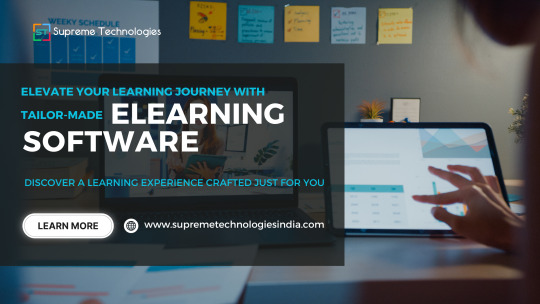
The approach for learning is changing faster than ever. There is no longer traditional classrooms are the only option. All credit to technology, eLearning is turning education. Whether it’s a business, school, or individual, more people are turning to eLearning software to create meaningful online learning experiences. Think of it as a tool that brings all kinds of learning to life, from courses and training programs to interactive lessons. This shift isn’t just about convenience—it’s about making education more accessible and engaging for everyone, wherever they are.
Shape the Future with eLearning Software
Learning is personal, and so are the needs of today’s learners and organizations. eLearning software isn’t just about delivering information—it’s about creating meaningful, personalized experiences that actually help people grow. It’s flexible, intuitive, and designed to adapt to whatever goals you're chasing. It’s learning, made for you.
Personalized Learning: Tailored Just for You
Learning should feel like it’s made for you, and that’s exactly what custom eLearning does. It moves away from the old one-size-fits-all approach and gives you something personal, something that adapts to your pace, style, and goals. Whether you need extra time or like to move quickly, custom eLearning fits into your life, making learning easier and more effective. It's all about giving you what you need, when you need it.
Flexibility: Learning That Fits Your Life
Life is busy, and learning should fit into your schedule—not the other way around. With custom eLearning software, you can dive into your courses whenever it works for you, whether you’re balancing work, family, or other commitments. It’s designed to be there when you need it, making learning easier, more convenient, and accessible for everyone. Learn at your pace, on your time.
Engagement: Making Learning Interactive and Fun
Engagement is key to effective learning. Custom eLearning software goes beyond static content to incorporate interactive elements that capture learners’ attention. From gamified modules to interactive quizzes, these features make the learning process more engaging and enjoyable.
Scalability: Growing with Your Needs
As organizations and educational institutions evolve, so do their training and learning needs. Custom eLearning software offers the scalability to grow alongside these changes. Whether you’re expanding your training program or updating content to reflect new developments, custom solutions can adapt to meet your evolving requirements.
Implementing eLearning Software in Your Organization
Adopting eLearning software involves more than just choosing the right platform. It requires a thoughtful approach to ensure that the software aligns with your educational goals and integrates seamlessly with existing systems. Here are some tips for a successful implementation:
Assess Your Needs: Identify the specific needs of your learners or organization to select an eLearning software that offers the required features and capabilities.
Customize Content: Tailor the content and learning paths to meet the unique needs of your audience. This customization ensures that the learning experience is relevant and impactful.
Integrate with Existing Systems: Ensure that the eLearning software integrates smoothly with any existing Learning Management Systems (LMS) or other tools used within your organization.
Provide Support: Offer training and support to users to facilitate a smooth transition to the new platform and maximize its effectiveness.
Factors to learn While eLearning Software Development
One must need proper guidance from top industry experts to build eLearning software.There are dynamic factors you need to remember for eLearning software development.
User Experience (UX)
One of the important factors to keep in mind is User Experience (UX). No matter what size of the app is, the user interface as well as user experience will be important to capture the user’s attention.
Compatibility
Before the start of the development process, ask developers to consider the basic principles of software development. For that, the developing team should make sure the app runs efficiently on both operating systems.
Security
As a business owner, you must protect the user data no matter what layer of security is required. Since eLearning software has vast students' or teachers’ data, the developing team needs to build software security as well.
Scalability
eLearning software should have the ability to accommodate small or large size content data. Also, the team should ensure it keeps performing at the optimum level regardless of how many users access the app.
Analytics
The eLearning software is incomplete without reports and analytics to gauge the performance and usage. It is another thing to keep in mind while developing because you will need user behavior and engagement data after some stages.
The Path Forward: Embrace Custom eLearning Solutions
The role of custom eLearning solutions in shaping the future of education and training cannot be overstated. These tailored platforms offer a level of personalization, flexibility, and engagement that traditional methods simply cannot match. Whether you’re an organization looking to enhance training programs or an educational institution seeking to innovate teaching methods, custom eLearning software provides the tools you need to succeed.
Conclusion
Are you ready to take your learning experience to the next level? Learn more about how custom eLearning solutions can transform your educational approach here. Explore the possibilities and see how these innovative tools can make a difference for you.
Visit Supreme Technologies for more information and to get started with custom eLearning solutions. Let’s revolutionize learning together!
#custom elearning solutions#eLearning software#eLearning solutions#Elearning Software Development#Elearning Development Services
0 notes
Text
IETM for Beginners A Quick Guide to IETM Code and Pixels
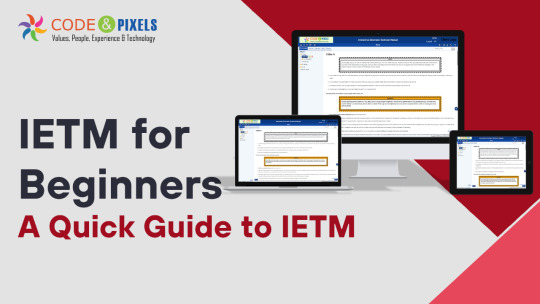
IETM: Interactive Electronic Technical Manual
Training Aids to Defence Client
If you are a supplier of defence then along with the system/equipment you also need to provide Training Aids
(CBT) — Computer-Based Training
Charts and Bloups
Video Film
Training Work Modules
Manuals Hard Copies
IETM
Evolution of Documentation in Defence
Before — Hardcopies and PDFs in DVDs (Upto 2015)
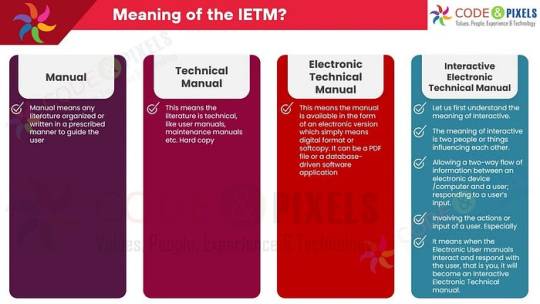
What is the meaning of the IETM?
Manual: Manual means any literature organized or written in a prescribed manner to guide the user.
TechnicalManual: This means the literature is technical, like user manuals, maintenance manuals etc. Hard copy
Electronic Technical Manual: This means the manual is available in the form of an electronic version which simply means digital format or softcopy. It can be a PDF file or a database-driven software application.
Interactive Electronic Technical Manual:
Let us first understand the meaning of Interactive. The meaning of interactive is two people or things influencing each other.
Allowing a two-way flow of information between an electronic device /computer and a user; responding to a user’s input.
Involving the actions or input of a user. Especially
It means when the Electronic User manuals Interact and respond with the user, that is you, it will become an Interactive Electronic Technical manual.
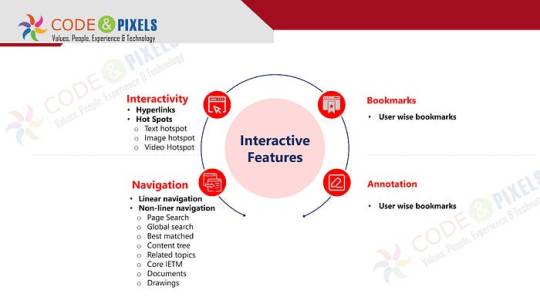
Interactive Features
Interactivity
Hyperlinks
Hot Spots
Text hotspot
Image hotspot
VideHotspot
Bookmarks
User wise bookmarks
Navigation
Linear navigation
Non-liner navigation
Page Search
Global search
Best matched
Content tree
Related topics
Core IETM
Documents
Drawings
Annotation
User wise bookmarks
The documents and pages are many hence, for easy and fast accessibility complete content is converted and stored as a database.
Whenever the user wants some information, IETM software produces the information in a fraction of a second.
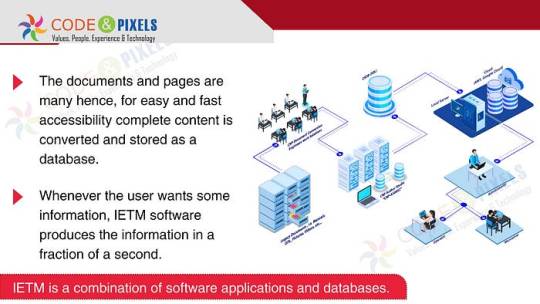
Use or Purpose of the IETM?
The purpose of the Manual is to give information related to the equipment to the end user for quick reference.
All the technicality is written in detail so that when an issue arises, the user can refer to the manual, as every time OEM or technical person or subject matter expert might not be available on the spot to resolve the issue.
If the manual has 10 pages users can refer easily.
But any system used by the defence will have multiple manuals and thousands of page counts and many times a user has to cross-refer between manuals, intra-manual and inter-manual to resolve the issue.
Referring to 10- 15 hard-copy or even soft-copy books simultaneously will be difficult and time-consuming.
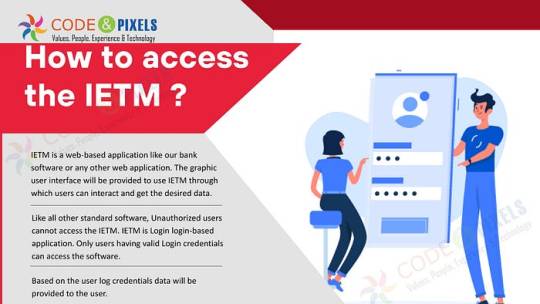
How to access the IETM ?
IETM is a web-based application like our bank software or any other web application. The graphic user interface will be provided to use IETM through which users can interact and get the desired data.
Like all other standard software, Unauthorized users cannot access the IETM. IETM is a Login - login-based application. Only users having valid Login credentials can access the software.
Based on the user log credentials data will be provided to the user.
IETM has 2 types of Users and one Administrator
Maintainer
Operator
If the operator logs in, the user gets all the content related to operator use, similarly if the maintainer logs in only maintenance-related content is visible for that user.
Ideally, all the content is available for both users, because the purpose of the IETM is to refer to the manual to fix the issue.
Administrators can create users who can see the user’s navigation and log-in history and interact with the users using user dashboards through Annotations.
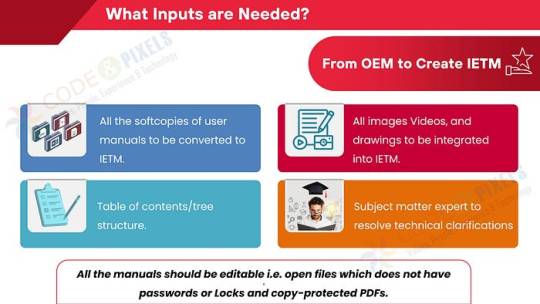
What Inputs are Needed? (From OEM to Create IETM)
All the softcopies of user manuals to be converted to IETM.
All images Videos, and drawings to be integrated into IETM.
Subject matter expert to resolve technical clarifications
Table of contents/tree structure.
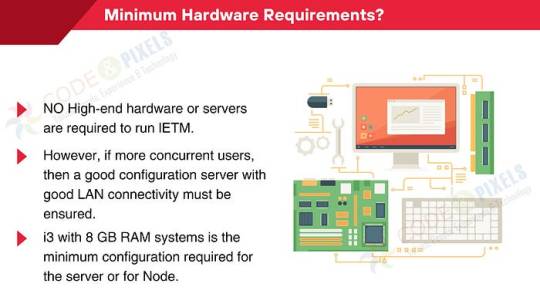
Minimum Hardware Requirements?
NO High-end hardware or servers are required to run IETM.
However, if more concurrent users, then a good configuration server with good LAN connectivity must be ensured.
i3 with 8 GB RAM systems is the minimum configuration required for the server or for Node.
Deliverables
BASED DB (Manuals are covered in the Database)
IETM VIEWER Software
User Manual and Installation Manual
Standards — compliance
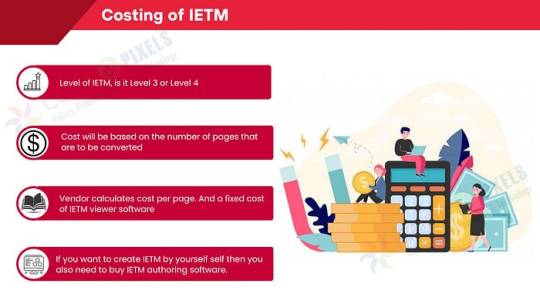
Costing of IETM: (Interactive Electronic Technical Manual)
Level of IETM, is it Level 3 or Level 4
Cost will be based on the number of pages that are to be converted
The vendor calculates the cost per page. And a fixed cost of IETM viewer software
If you want to create IETM by yourself self then you also need to buy IETM authoring software.
What are these Levels?
Level — 1 is any PDF file
Level — 2 is a PDF file with hyperlinks from the table of contents to the body etc.
Level — 3 is an HTML application. More hyperlinks, simple search, a content tree having log a screen with a hardcoded username and password and supplied in the format of EXE so that Windows can easily open
Level — 4 is Software plus Content/manuals converted as Database
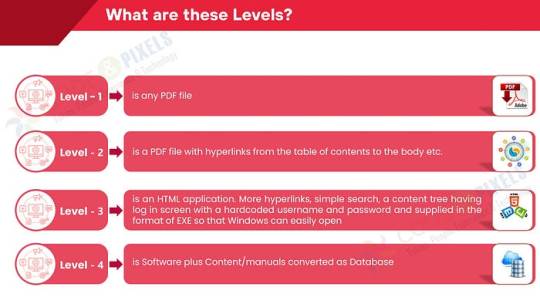
Regarding Level — 5, rest assured, till 2028 it will be Level — 4 only. As of now, there is nothing practically called Level — 5. Few are calling virtual reality and Augmented reality and Artificial intelligence Level — 5.
Pulling data from many user inputs and analyzing and giving results are done in Level — 5. IETM software cannot pull the data from various real-time points as No OEM will give the real-time information to third-party software directly. Yes, if the information is available offline, then that information can be imported into IETM and can be used as a reference.
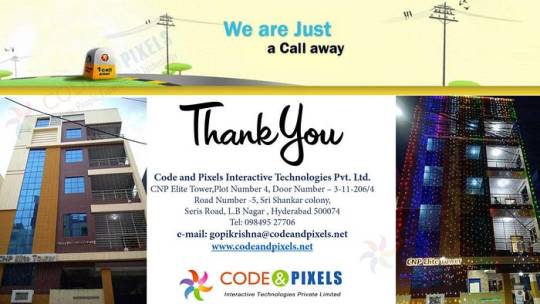
#ietm#software#technology#ietm developement#ietm code and pixels ietm hyderabad#ietm software#elearning#code and pixels#ietm level iv#codeandpixels#ietm level 4 software requirements#technical documentation#ietm document#ietm documentation#interactive electronic technical manual#Ietm Service Providers#Ietm Software Designers of India#Software Development Company#Elearning Solutions Company#E Learning Content Development Company#Online Education#Digital Education#Digital Content#Software Development Solutions#Elearning#Ietm Developers#Econtent Development#Elearning Solutions Providers#Econtent Developers#Econtent
3 notes
·
View notes
Text
0 notes
Text
What’s the Most Effective Branding Strategy in 2025?
As a branding agency, we’re always curious about what works best in the ever-changing world of digital marketing. So, we’re putting this question to you: What’s the most effective branding strategy in 2025?
Social Media Engagement Building a community and connecting directly with your audience through platforms like Instagram, Facebook, LinkedIn, and TikTok.
2D & 3D Animation Using animated visuals for storytelling, product demos, and brand identity creation to stand out in crowded markets.
E-learning Platforms Integrating education into your brand experience by offering online courses or tutorials that add value to your audience.
Influencer Partnerships Collaborating with influencers to extend your brand’s reach and credibility.
#branding#3danimation#creative design#digtal marketing#filmmaking#photography#elearning#animation#2danimation#app development#app design#ui ux design#ui ux development services#ui ux agency#ui ux company#branding strategy
0 notes
Text

Exploring Educational Software to Enhance Learning Through Interactive Tools
Boost student engagement and understanding with educational software designed for both in-person and remote learning.
#education software development#Educational Software#elearning portal development company#elearning portal development services#elearning software development
0 notes
Text
Create Smart E-Learning Website and App

Want to launch your own e-learning platform? Tart Labs, the top web development company in India, shares a complete guide to help you build a great website or app for learning.
What to Include in Your Platform Important features include login, video courses, quizzes, progress reports, and easy navigation. These help users stay focused and make learning smooth.
Website or App: What Should You Choose? Websites are good for people using desktops, while apps are better for mobile users. Our web development team can help you with the right choice.
How to Build It Step by Step First, plan your idea. Then design how it looks. Next comes development, testing, and launching. Each step is covered in our blog.
Best Tech Stack for E-Learning Using modern tools helps your platform run better. We use secure and fast technologies so users have a smooth experience. That’s why our web development services are trusted by many.
Building your e-learning website or app is simple with the right guidance.
Explore the full blog here: Guide eLearning website app development
#tartlabs#app development#web development#app development company#web development services#eLearning app development
0 notes
Text
Custom eLearning Development services for Effective Training
Discover custom eLearning development services designed to deliver engaging, effective training solutions.
0 notes
Text
Top IT Services Companies - Techinovativ
Top IT Services Companies empower businesses with cutting-edge technology solutions. They offer expertise in software development, cloud, cybersecurity, and digital transformation, driving efficiency, innovation, and competitive advantage for clients globally.
#Web Development Company#Top 10 Mobile App Development Companies#Mobile App Development Company#Software Application Development Companies#Best Local SEO Agency#Top IT Services Companies#ELearning App Development Services#UI UX Design Services#Top App Development Companies
1 note
·
View note
Text
New listings added today! (5/5/25): So, where do we go from here? That's the main question following the closing of STC. Here are some suggestions that I've gathered: #techcomm
#business communication#Communication#content#Content management#content strategy#Design#digital literacy#education#elearning#globalization#indexing#information architecture#information design#information development#instructional design#knowledge management#learning and development#localization#medical writing#proposal management#proposal writing#scientific communication#service innovation#talent development#tech comm#Technical communication#technical communications#technical editing#technical writing#technology
0 notes
Text
Custom E-Learning Development Services
In today’s fast-evolving business landscape, organizations are increasingly turning to custom elearning development services to meet their unique training needs. Unlike generic, off-the-shelf courses, custom eLearning is tailored to the specific goals, roles, and culture of a business, ensuring a more relevant and impactful learning experience. DRC Systems, a leader in innovative eLearning solutions, demonstrates how investing in custom eLearning can transform workforce development and drive organizational success.
Personalized Learning Experience
One of the most significant benefits of custom elearning development services is the ability to create content that directly addresses the skills gaps and learning objectives of your team. DRC Systems works closely with organizations to analyze their requirements and craft modules that are industry-specific and role-oriented. Whether it’s onboarding, compliance, or advanced technical training, custom solutions ensure that every learner receives relevant instruction, making the learning process more effective and engaging.
Enhanced Engagement and Retention
Custom eLearning leverages interactive elements such as videos, simulations, quizzes, and infographics to cater to diverse learning styles. This multimedia-rich approach, as practiced by DRC Systems, not only makes learning more enjoyable but also boosts retention rates. Employees are more likely to remember and apply what they’ve learned when the content is interactive and closely aligned with their daily tasks.
Flexibility and Accessibility
Modern workplaces demand training that fits into busy schedules. With custom elearning development services, employees can access training modules anytime, anywhere—be it in the office, at home, or on the go. This flexibility is particularly valuable for organizations with a geographically dispersed workforce, ensuring consistent training without the logistical challenges of in-person sessions.
Cost-Effectiveness and Scalability
While custom eLearning may require a higher initial investment, it delivers substantial long-term savings. Once developed, these modules can be reused and updated as needed, eliminating recurring costs associated with traditional classroom training or off-the-shelf solutions. DRC Systems also ensures that their custom eLearning platforms are scalable, accommodating organizational growth and evolving training needs.
Consistency and Measurable Results
Custom eLearning ensures that every employee receives the same high-quality training, maintaining consistency across departments and locations. DRC Systems incorporates analytics and progress tracking into their solutions, enabling organizations to measure learning outcomes and continuously improve their programs.In conclusion, partnering with a provider like DRC Systems for custom elearning development services empowers organizations to deliver targeted, engaging, and cost-effective training that supports both employee growth and business objectives.
0 notes
Text
Boost Learning & Development with Instructional Design
Explore how instructional design services play a key role in enhancing employee learning and development. This blog by 42 Design Square dives into the benefits of effective instructional design—from creating learner-focused content to leveraging technology for engagement. Learn how businesses can utilize eLearning development solutions to foster a more skilled and agile workforce. Whether you're launching a new training initiative or improving existing programs, instructional design can maximize impact and ROI. Discover proven strategies to align learning goals with business objectives and drive long-term growth through well-structured, impactful training modules crafted by eLearning experts.
0 notes
Text
Transforming STM and Educational Content Distribution with End-to-End Digital Publishing
In today’s fast-paced, technology-driven world, the need for streamlined, efficient, and innovative solutions in digital publishing is more critical than ever. For sectors like STM (Science, Technology, and Medicine) and education, digital publishing plays a pivotal role in disseminating information, fostering learning, and supporting research and knowledge sharing. End-to-end digital publishing solutions have emerged as an essential tool for organizations, providing a comprehensive approach to creating, managing, and distributing digital content effectively.

What Are End-to-End Digital Publishing Solutions?
End-to-end digital publishing solutions refer to a complete system that supports the entire lifecycle of content creation, management, and distribution. These solutions incorporate tools, platforms, and technologies that allow publishers to handle everything from content creation to the final output, whether it’s in the form of eBooks, journals, interactive content, or educational materials. These solutions are designed to cater to the specific needs of industries like STM and education, where accuracy, speed, and accessibility are paramount.
Key Components of End-to-End Digital Publishing Solutions
Content Creation The foundation of any digital publishing effort begins with content creation. For STM and educational publishers, content can range from research articles, journals, textbooks, and online courses, to multimedia-rich educational resources. Advanced tools for content creation include word processors, LaTeX integration, image editing tools, and video creation platforms. Content can be created by multiple authors across different geographical locations, with integrated cloud collaboration tools that enable real-time updates and feedback.
Content Management and Collaboration Managing a large volume of content is no easy task, especially when content is continuously being updated, reviewed, or revised. A centralized content management system (CMS) allows publishers to track and manage content, ensuring a seamless workflow between authors, editors, and production teams. Collaboration tools within a CMS are particularly useful in the STM field, where multiple experts often need to provide feedback and make revisions. Educational publishers benefit similarly, as multiple stakeholders—teachers, instructional designers, and technologists—can collaborate on the content and structure of materials.
Metadata and SEO Optimization For STM and educational publishers, metadata plays a crucial role in ensuring that digital content is easily discoverable by readers, researchers, and students. An end-to-end publishing solution incorporates metadata management, which ensures that each piece of content is properly tagged, categorized, and searchable. This is vital for STM publishers, whose content needs to be highly accurate and discoverable for research purposes. Additionally, SEO optimization ensures that educational content reaches the right audience via search engines.
Content Formatting and Conversion The next step in the digital publishing process is formatting and conversion. For STM publishers, content needs to be formatted for various platforms such as academic journals, PDFs, or eBooks. Educational content may need to be converted into e-learning modules or interactive PDFs. End-to-end solutions automate the conversion process into multiple formats while ensuring the integrity of the content remains intact. This is especially important in STEM, where visual clarity and data accuracy are critical.
Interactive and Multimedia Integration Modern digital publishing in education requires the integration of multimedia elements such as video lectures, interactive quizzes, and virtual labs. These elements engage learners and enhance the learning experience. In STM, interactive graphs, datasets, and simulations are often embedded into content to allow readers to interact with complex information. End-to-end solutions support seamless integration of these multimedia elements, providing educational content with interactivity and engagement while maintaining scientific accuracy.
Digital Distribution Once content is created, managed, and formatted, the next step is distribution. An end-to-end digital publishing solution ensures that content is accessible across various digital platforms—websites, mobile apps, learning management systems (LMS), and even e-commerce platforms. For STM publishers, digital libraries and repositories (such as PubMed and JSTOR) are essential for distributing research and scholarly work to global audiences. Educational publishers rely on distribution through e-learning platforms, school portals, and academic bookstores to reach students and instructors.
Analytics and Reporting Analytics and reporting are key components of a comprehensive publishing solution. By integrating real-time data and user analytics, STM and educational publishers can assess how their content is being consumed, identify popular articles or textbooks, and gather feedback on how educational materials are helping students learn. This data-driven approach allows publishers to refine their offerings, improve user engagement, and better serve their target audience.
Monetization and Licensing For both STM and educational publishers, monetization plays a significant role in the digital publishing process. End-to-end solutions incorporate tools for subscription management, pay-per-view access, licensing, and rights management. For STM publishers, this can involve licensing research papers, journals, or patents, while educational publishers might offer paid course content, digital textbooks, or training modules. These systems help streamline revenue generation through content while ensuring compliance with intellectual property laws.
The Benefits of End-to-End Digital Publishing Solutions for STM and Education
Improved Efficiency and Workflow By integrating all stages of the publishing process into one unified solution, publishers can automate repetitive tasks, reduce manual intervention, and speed up the time it takes to publish new content. This results in faster distribution of research findings, educational materials, and academic publications.
Scalability As both the STM and education sectors continue to expand digitally, scalability is critical. End-to-end solutions are designed to grow alongside these industries, accommodating the increasing volume of content, users, and platforms. They can easily handle a growing repository of research papers, educational materials, and multimedia content.
Enhanced Accessibility Accessibility is a core value in both education and scientific communication. End-to-end solutions ensure that content is easily accessible to users across the globe, regardless of their device, location, or internet connection. These platforms also offer features like text-to-speech, closed captioning, and language localization, making content more inclusive.
Data-Driven Insights Analytics features integrated into digital publishing solutions help publishers track content performance and make data-driven decisions to optimize their offerings. Understanding how users interact with content allows STM and educational publishers to refine their strategies, improve engagement, and enhance the quality of their resources.
Cost-Effective Solutions Traditional publishing methods often require heavy investment in printing, distribution, and physical storage. By going digital, publishers reduce these costs significantly. An end-to-end digital publishing solution streamlines the process, leading to cost-effective solutions for both content creation and distribution.
Conclusion
In the rapidly evolving world of STM and education publishing, end-to-end digital publishing solutions are essential for staying competitive and relevant. By providing a comprehensive framework for content creation, management, distribution, and monetization, these solutions offer organizations the tools they need to meet the demands of their audiences and stay ahead of the curve. Whether it’s streamlining research distribution, enhancing e-learning experiences, or driving engagement, end-to-end solutions are key to the future of digital publishing in these industries.
#Corporate Training Solutions#Custom eLearning Development#Learning and Development Solutions#End-to-end publishing services#STM publishing solutions#Education publishing solutions#Digital publishing transformation#AI-powered publishing solutions
0 notes